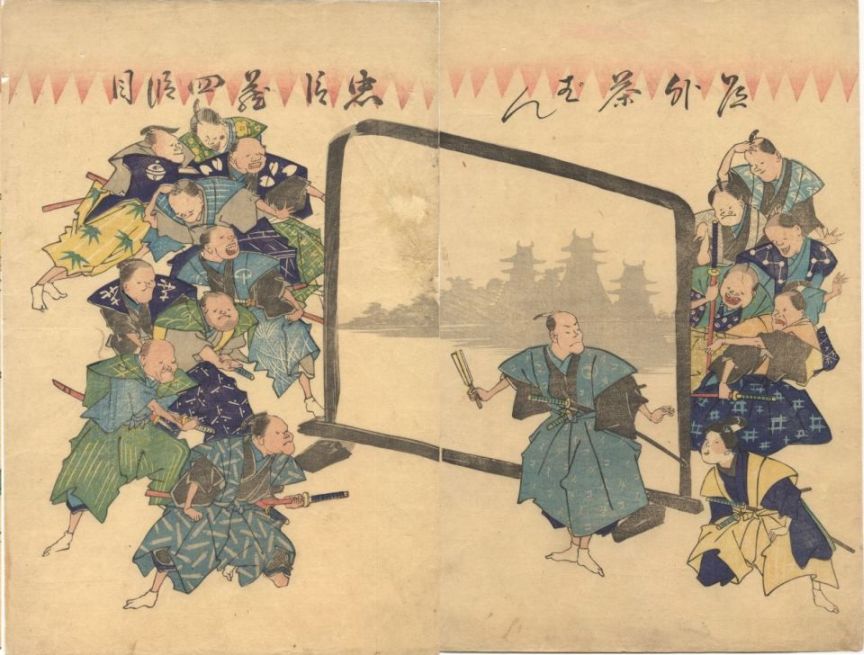Posted By: Stan
Posted Date: May 09, 2017 (11:14 PM)
We've had this print in our collection for about 10 years. I was thinking of putting this diptych (two vertical oban sheets) on the Forum to try to learn what the titles said. The print has no artist signature. I love the print. The samurai are well done. Each has different features with a different expression. The kimonos are all different. I always wondered what they were doing.
I then remembered that I hadn't put the print in Google image search. When I did that, I was able to find the Japanese text of each page. I ran that through Google translate. As best I can tell, the title reads "Cushingura Act 4 - Outdoor Tea Ceremony. The Cushingura (aka "47 Loyal Retainers") (aka "47 Ronin" - yeah there was a really bad movie with Keanu Reeves by that title) is one of the great Japanese legends.
Little did I know what was going on. From Wikipedia:
-------------------------------------------------
Act IV, scene 1, Enya yakata no ba (“Enya Hangan’s Seppuku”)
Hangan is ordered to commit seppuku and his castle is confiscated. The emotional highlight of this scene is Hangan’s death. The preparations for the ceremony are elaborate and formal. He must kill himself on two upturned tatami mats which are covered with a white cloth and have small vases of anise placed at the four corners. He is dressed in the shini-shōzoku, the white kimono worn for death. The details of the seppuku were strictly prescribed: the initial cut is under the left rib-cage, the blade is then drawn to the right and, finally, a small upward cut is made before withdrawing the blade. Hangan delays as long as he can, however, for he is anxious to have one last word with his chief retainer, Yuranosuke. At the last moment, Yuranosuke rushes in to hear his lord’s dying wish to be avenged on Moronô. Hangan is left to despatch himself by cutting his own jugular vein.
This act is a tosan-ba, or "do not enter or leave" scene, which means the audience was not allowed to enter or leave while it was played, the atmosphere had to be completely silent and nothing was allowed to disturb the suicide scene.
-------------------------------------------------
Or I could be completely wrong. Confirmation anyone? Thanks!
Cheers,
Stan
